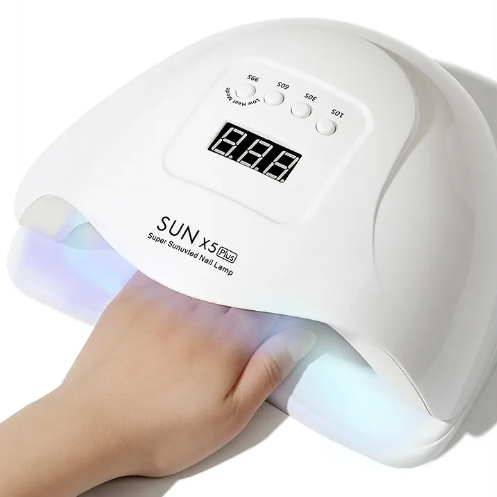Email format error
Email cannot be empty
Email already exists
6-20 characters(letters plus numbers only)
The password is inconsistent
Email format error
Email cannot be empty
Email does not exist
6-20 characters(letters plus numbers only)
The password is inconsistent

In the world of at-home manicures and professional nail salons, the quest for the perfect gel polish application has led to a technological face-off: LED vs. UV nail lamps. Both promise to deliver flawless, long-lasting nail art, but which one should you trust with your manicure? This comprehensive guide will delve into the nail lamp technologies, their benefits, and drawbacks, and answer the age-old question: what is better, a LED or UV nail lamp?
UV nail lamps have been a staple in the industry for years. They operate by emitting ultraviolet light that cures the gel polish through a process of photopolymerization. This means the UV light activates the photoinitiators in the gel, causing the molecules to harden and set.
LED (Light Emitting Diode) nail lamps are a relatively newer technology that uses a specific wavelength of light to cure gel polish. LED lamps are known for their efficiency, emitting a narrower spectrum of UV light that targets specific photoinitiators in the polish, resulting in faster curing times.

One of the most significant differences between LED and UV nail lamps is the curing time. LED lamps can cure a gel polish coat in as little as 30-60 seconds, while UV lamps may take up to 2-3 minutes.
LED lamps are generally more expensive upfront but are more cost-effective in the long run due to their longer bulb life. UV lamps may require more frequent bulb replacements, but they are initially more affordable.
There is a common misconception that UV nail lamps are harmful due to their UV exposure. However, the truth is that the exposure time during a typical nail service is minimal and comparable to a brief walk outside. Both LED and UV lamps are considered safe for recommended use, with LED lamps being slightly safer due to less UV radiation exposure.
UV lamps have the advantage of being compatible with a broader range of gel polishes, including strong gels and hard gels. LED lamps, while efficient, may not work with all gel polish brands, as some are specifically formulated for UV lamps.
LED lamps are known to increase the longevity of your nail polish, reducing the risk of peeling or chipping. They also emit less UVA radiation, which is considered safer for the skin and nails.
In the era of sustainability, it's worth noting that LED lamps are more energy-efficient and produce less heat, making them a greener choice.
Choosing between a LED and UV nail lamp ultimately depends on your personal preferences, budget, and the specific gel polishes you plan to use. If speed, efficiency, and safety are your top priorities, a LED nail lamp may be the better choice. However, if you require compatibility with a wide range of polishes and are on a tighter budget, a UV nail lamp could be the way to go.
Ready to make your decision? Whether you're a nail technician or a nail lover, understanding the differences between LED and UV nail lamps will help you achieve the perfect manicure every time. Explore our range of nail lamp options and find the one that fits your needs and preferences.